How It Works

Slide title
Write your caption hereButton
Slide title
Write your caption hereButton
Slide title
Write your caption hereButton
How Gycor Filter Pads PreventOil Breakdown
Simplifies the Entire Shortening Filtration Process
- Eliminates the need for loose powder. The powder is built-in to the pad.
- Reduces cleanup time.
- Eliminates the mess of sprinkling filter powder into the filter machine or the vat.
- Makes waste disposal easy.
- You just toss out the used pad and replace with a fresh one each day.
- Comes in sizes and shapes to fit any machine. No retrofitting or special screens required.
- Saves valuable storage space. Pads eliminate the need to store both loose powder and filter paper.
- Special Ingredient. Powder impregnated into pad is a highly efficient silicate that can’t be used as loose powder on ordinary paper.
- Exceptional Filtration. Clarifies, brightens and freshens shortening more effectively than competitive products for longer quality frylife and top-quality food taste, texture and aroma.
- Eliminates operational error. The same amount of powder is evenly distributed within each pad for consistent filtration.
- 30-day packaging. Makes it easy to monitor frequency of filtration. Helps assure that shortening is filtered daily for optimum frylife.
The 3 Enemies of Healthy Oil
Frying oils undergo certain chemical reactions during use. The most important changes occur as a result of interaction with shortening’s three main enemies. They are Heat, Air, and Water.
HEAT is unavoidable when frying. Heat causes polymerization, which is the reaction of fat with itself. Polymerization causes foaming which can be seen in the fryer. Overheating, hot spots, holding oil idle at frying temperatures for long periods of time, adding used oil, and failure to clean vats all help to polymerize the oil.
AIR is also an unavoidable part of the frying process; however, steps can be made to reduce the amount of air. Oxidation of the oil is the reaction of the frying oil with air. This reaction is greatly accelerated when the oil comes in contact with air both at its surface, during normal frying, and when filtering. The presence of trace metals, turnover rate of frying oil (frylife), a fryer sitting idle at frying temperatures for long periods of time, traces of food particles, and excessive aeration (i.e. – circulating the oil too long during the filtration process, allowing oil to splash when refilling the fryer, etc.) all contribute to the oxidation of the oil.
WATER and oil have never been a good mixture. Hydrolysis is the reaction of water with the frying oil which forms free fatty acids. The rate of increase of free fatty acids depends upon the types of food being fried (i.e. – frozen foods with excessive ice), the introduction of water to oil from the cleaning of the filter machine, and the presence of crumbs and burnt food particles (carbon) in the fryer. When these particles become oxidized they can directly affect the quality of the shortening.
Different Types of Frying Oil
Solid Shortening is the most stable oil available. Because of its stability, this oil can hold up to the nuances of the frying process. Heating of this type of oil can be somewhat dangerous as the shortening needs to be packed between the burners of the fryers to reduce the potential for fire. Although this oil is much more stable, it is not as user-friendly. And in today’s ever changing QSR employment, user friendliness is of utmost importance.
Partially Hydrogenated Liquid was developed to be more user-friendly oil. It allows for users to pour into fryers the oil without all of the problems associated with packing solid shortening. It also lends itself to quicker heating for topping off fryers and start up. However, liquid shortening has less frying stability than solid shortening. Without good filtering practices, this type of oil will break down quicker, smoke due to aeration, and foam due to hydrolysis.
Zero Trans Fat Liquid is a new shortening developed to eliminate or dramatically reduce the health hazards found in traditional liquid shortening. Unfortunately, this new oil is very unstable (less than partially hydrogenated liquid). And subject to higher costs for the restaurant. The typical practices used in filtering with traditional liquid shortenings now need to be reevaluated with the new low trans-fat liquid. This instability means that the oil’s three main enemies are now more destructive.
Key Points for using Gycor’s Filter Powder Pads
- Shorter filtration circulation time (5 minutes) means less chance for excessive aeration.
- Powder impregnated in pads ensures filtration of oil with a highly effective powder to counteract the chemical reactions and remove the oxidized matter.
- Convenient one month supply packaging enables managers to monitor daily filtration and ensure consistent treatment of the oil.
- Less add-back in fryers reduces excessive top-off with the more expensive oil while at the same time making the fried foods less greasy, better tasting, and more uniform in food color.
Contact Gycor
Thank you for contacting us.
We will get back to you as soon as possible
We will get back to you as soon as possible
Oops, there was an error sending your message.
Please try again later
Please try again later
Follow Us
7750 S. Grant Street •
Burr Ridge, IL 60527
Office: (630) 754-8070 • Toll Free: (800) 772-0660
Contact Us
Thank you for contacting us.
We will get back to you as soon as possible
We will get back to you as soon as possible
Oops, there was an error sending your message.
Please try again later
Please try again later
Gycor Filters | All Rights Reserved |
Created by Olive + Ash.
Managed by Olive Street Design.

